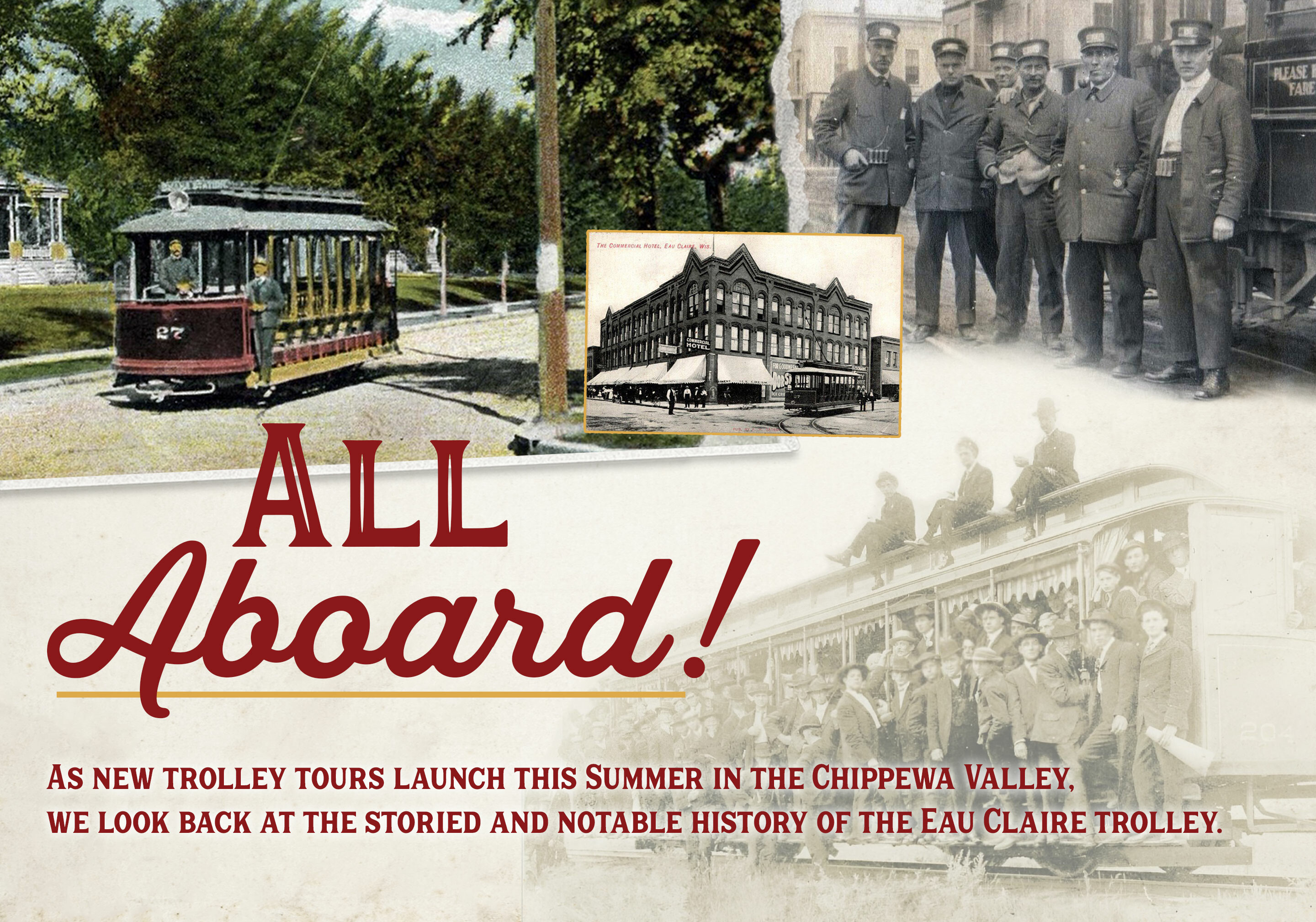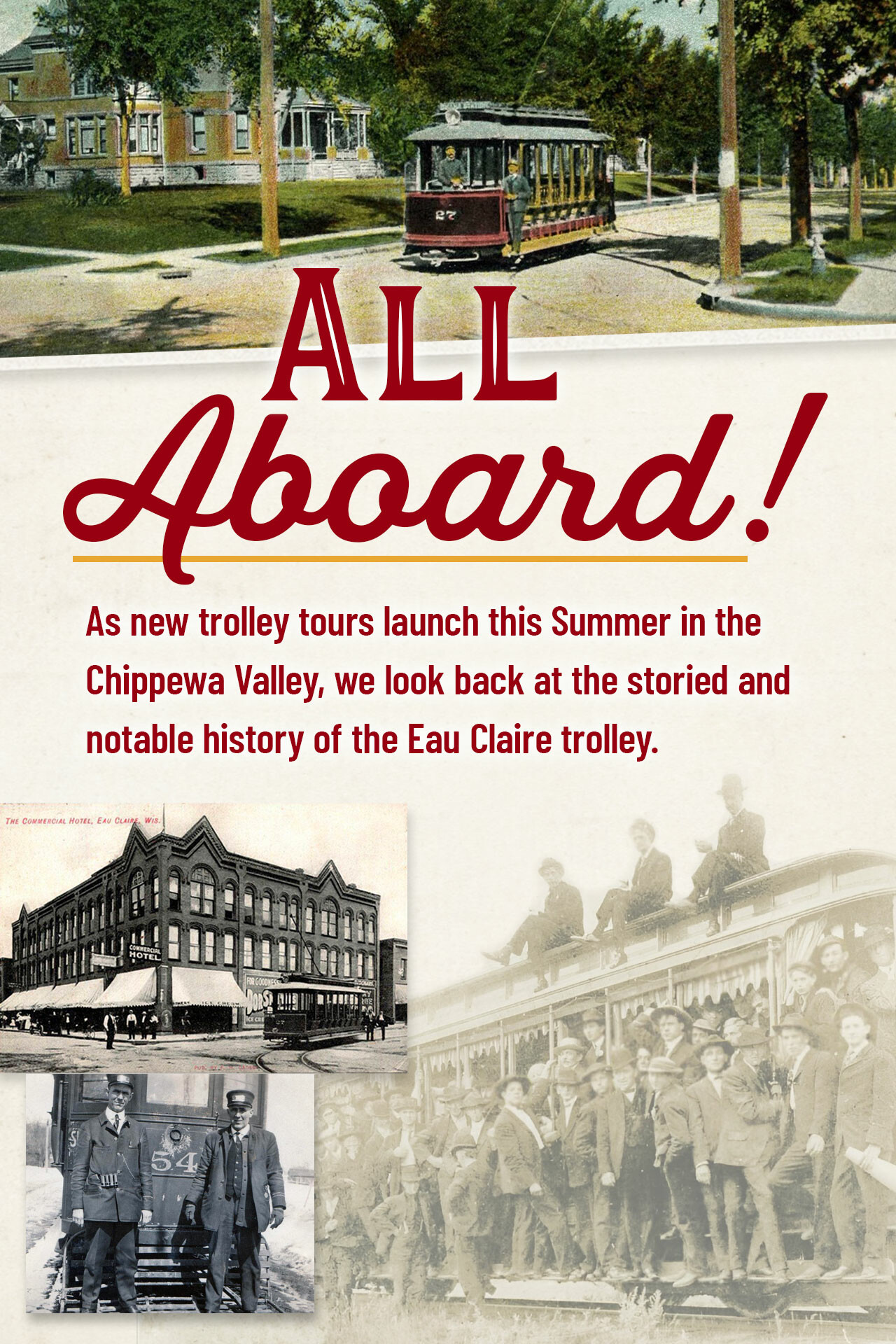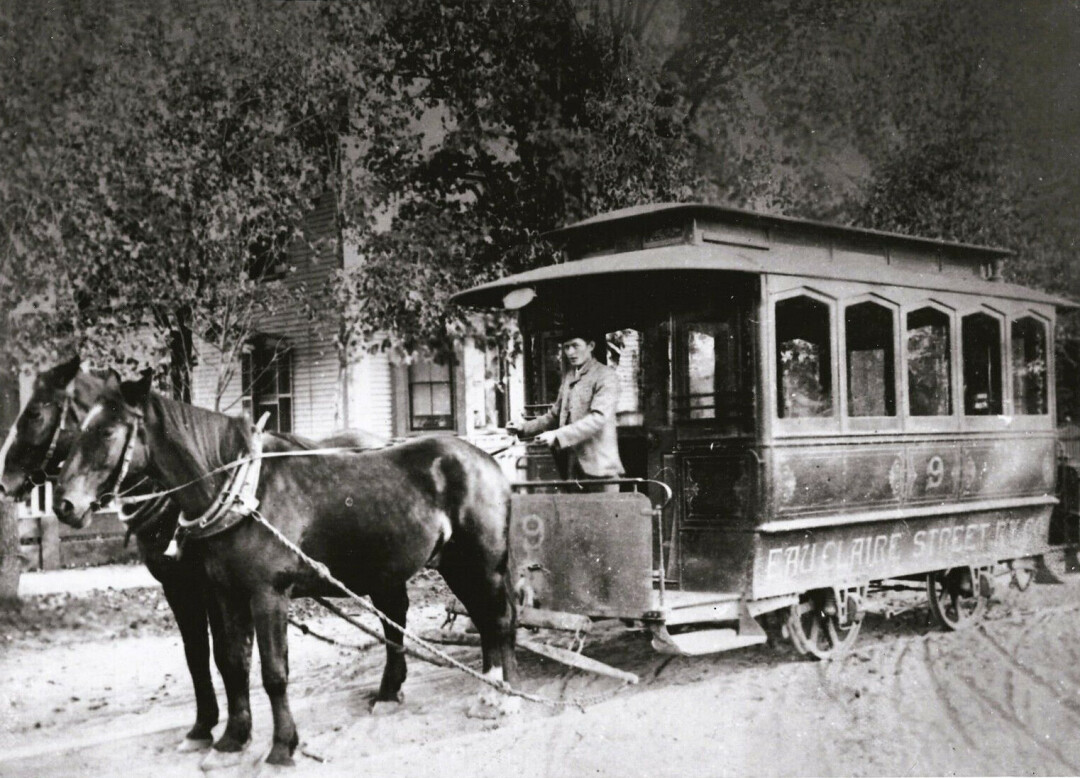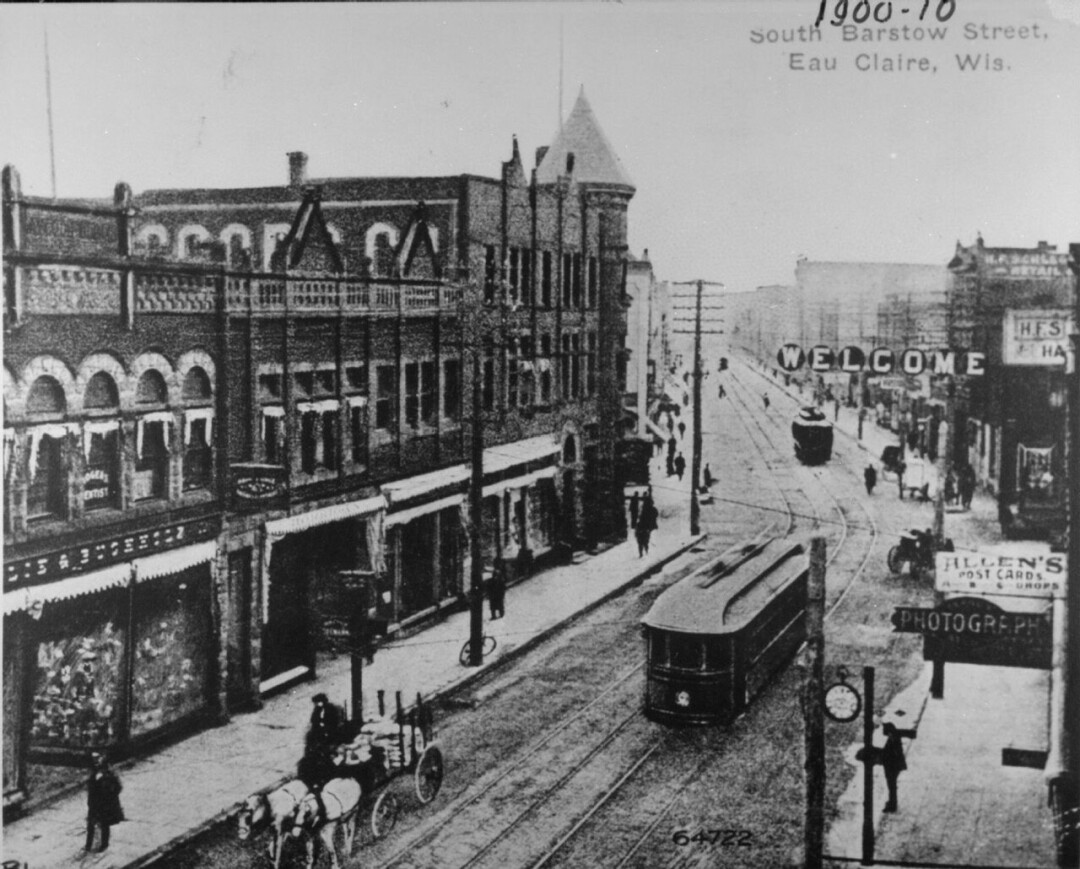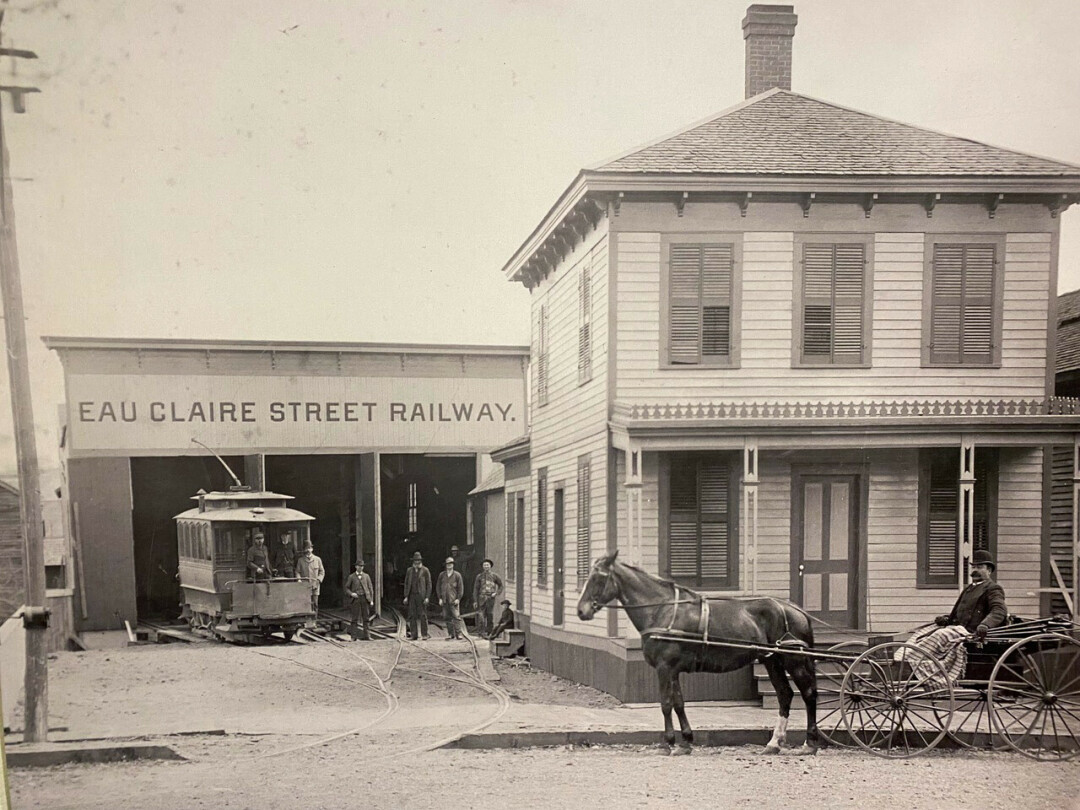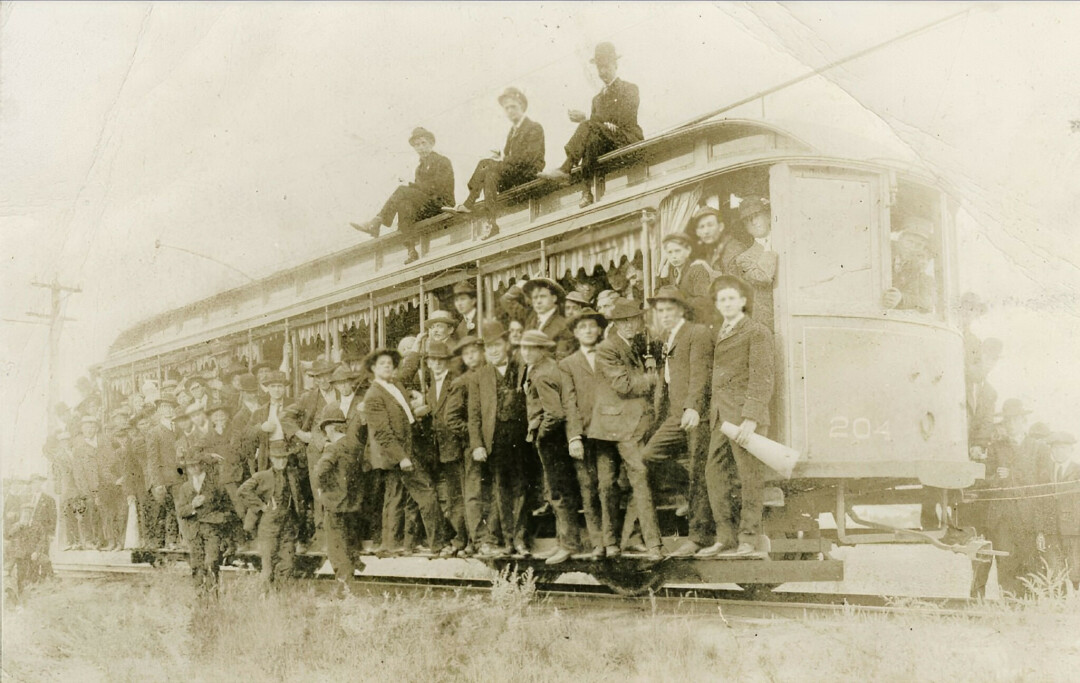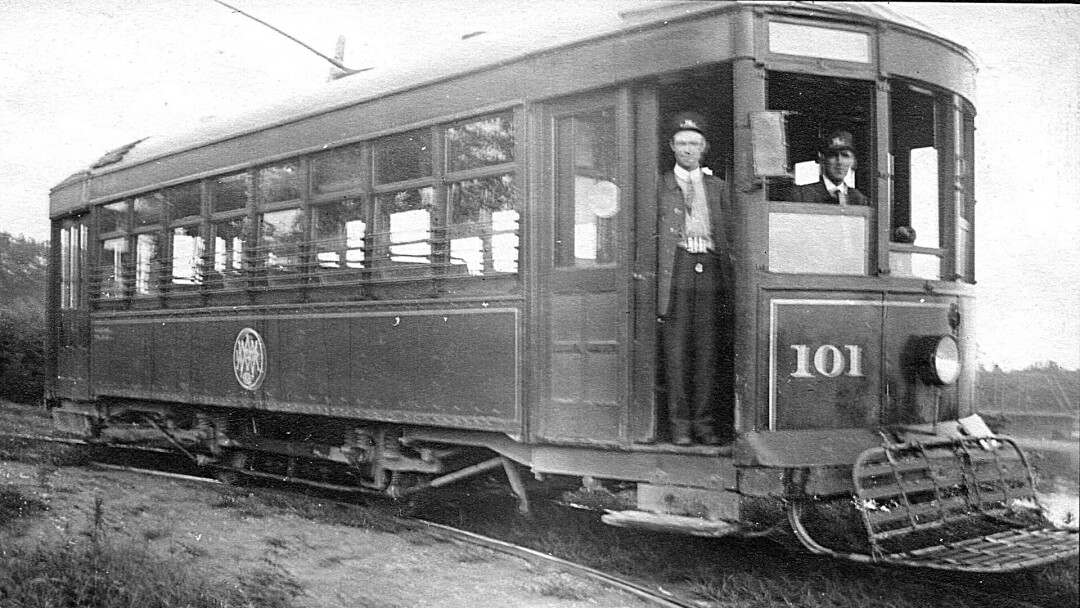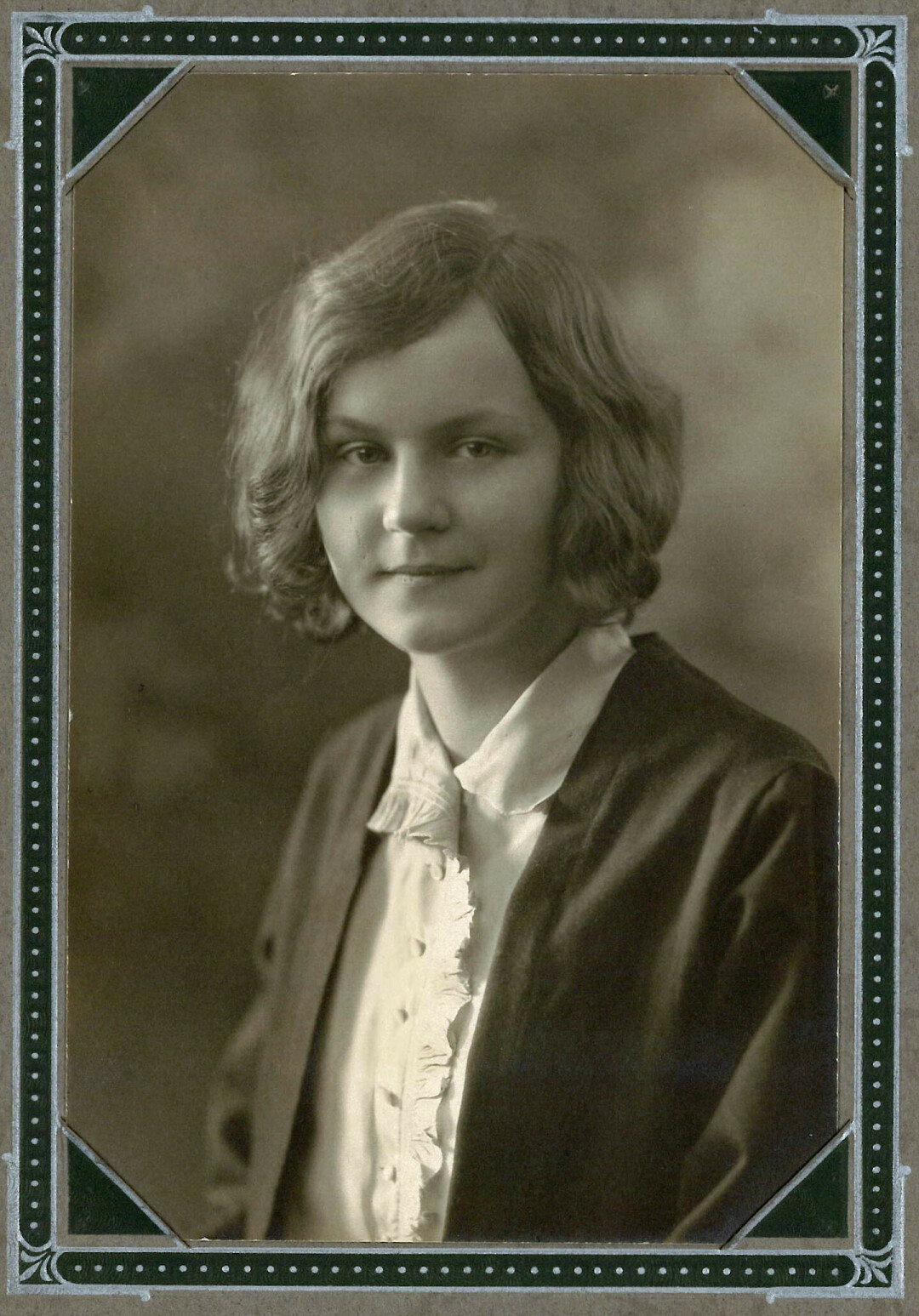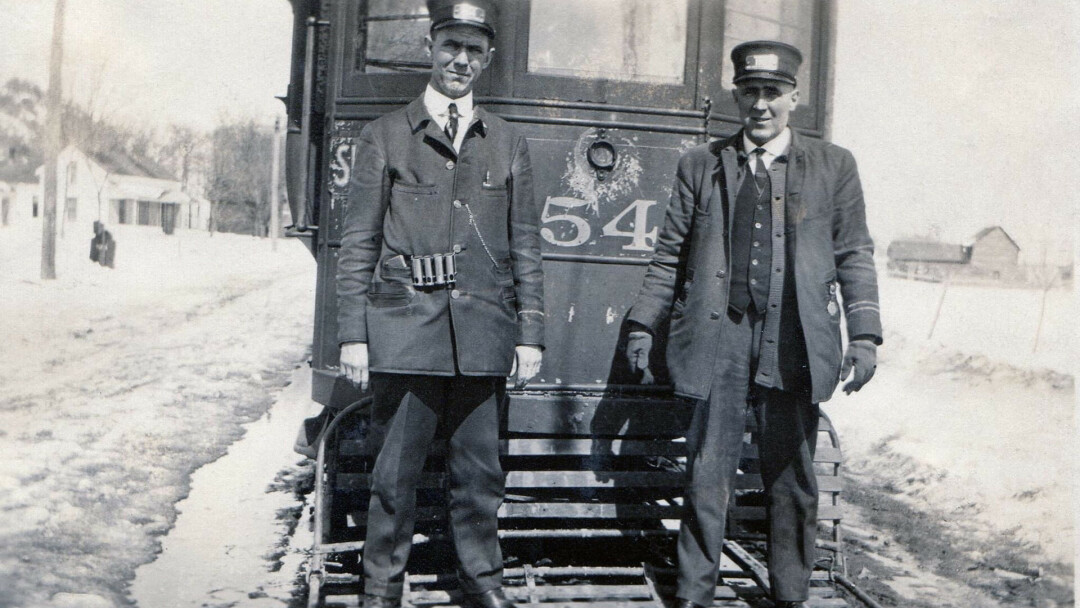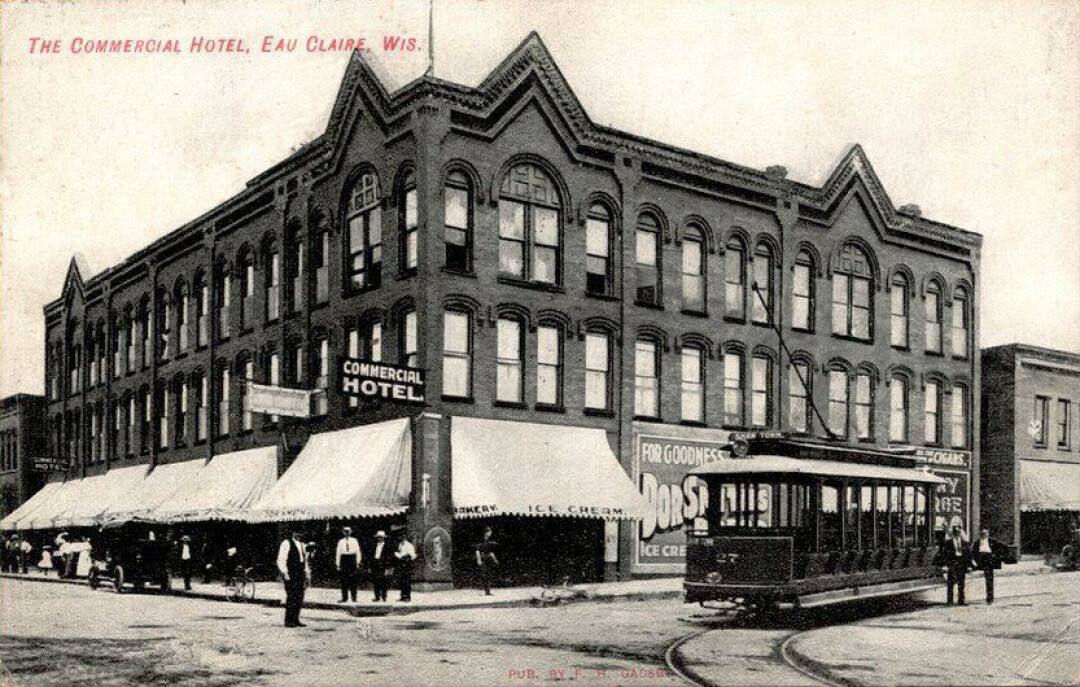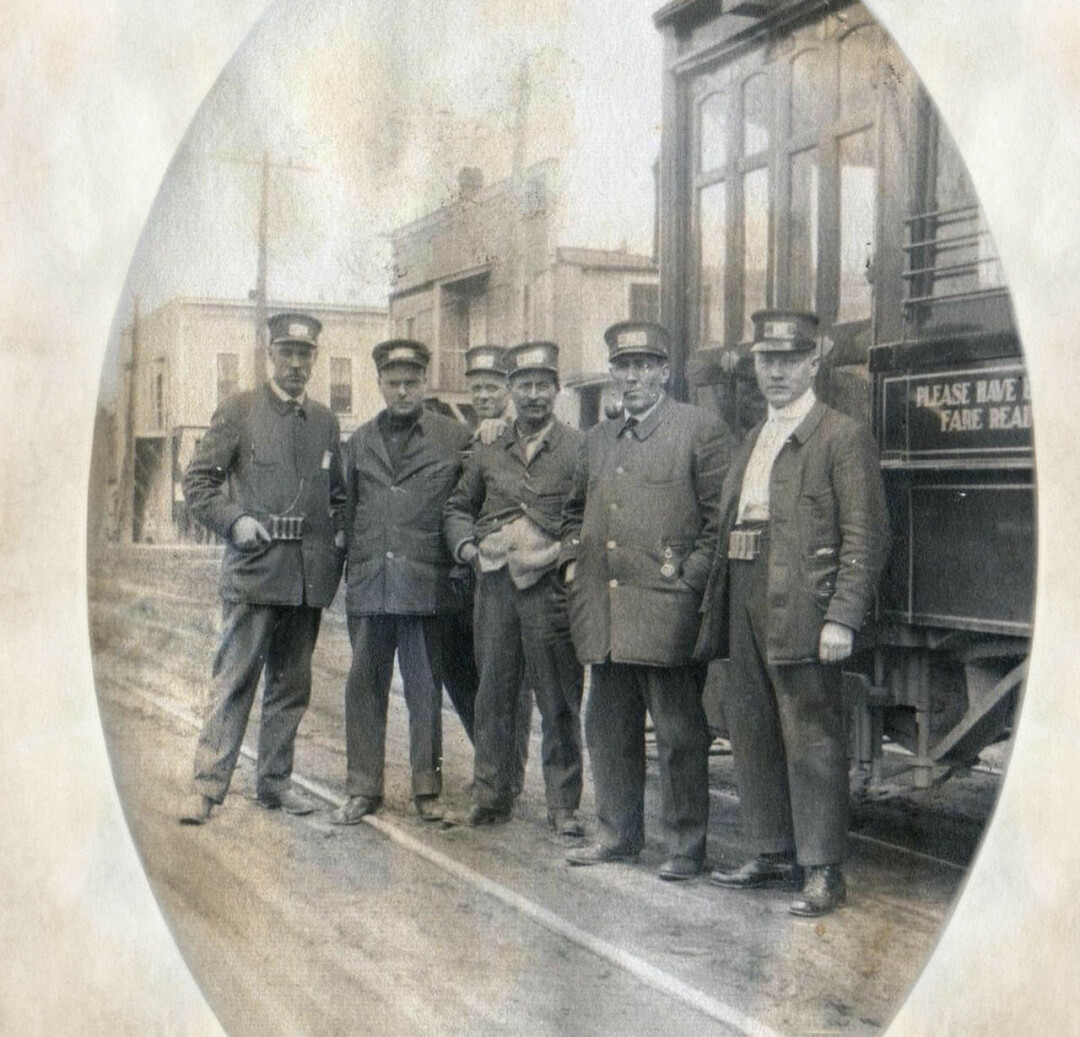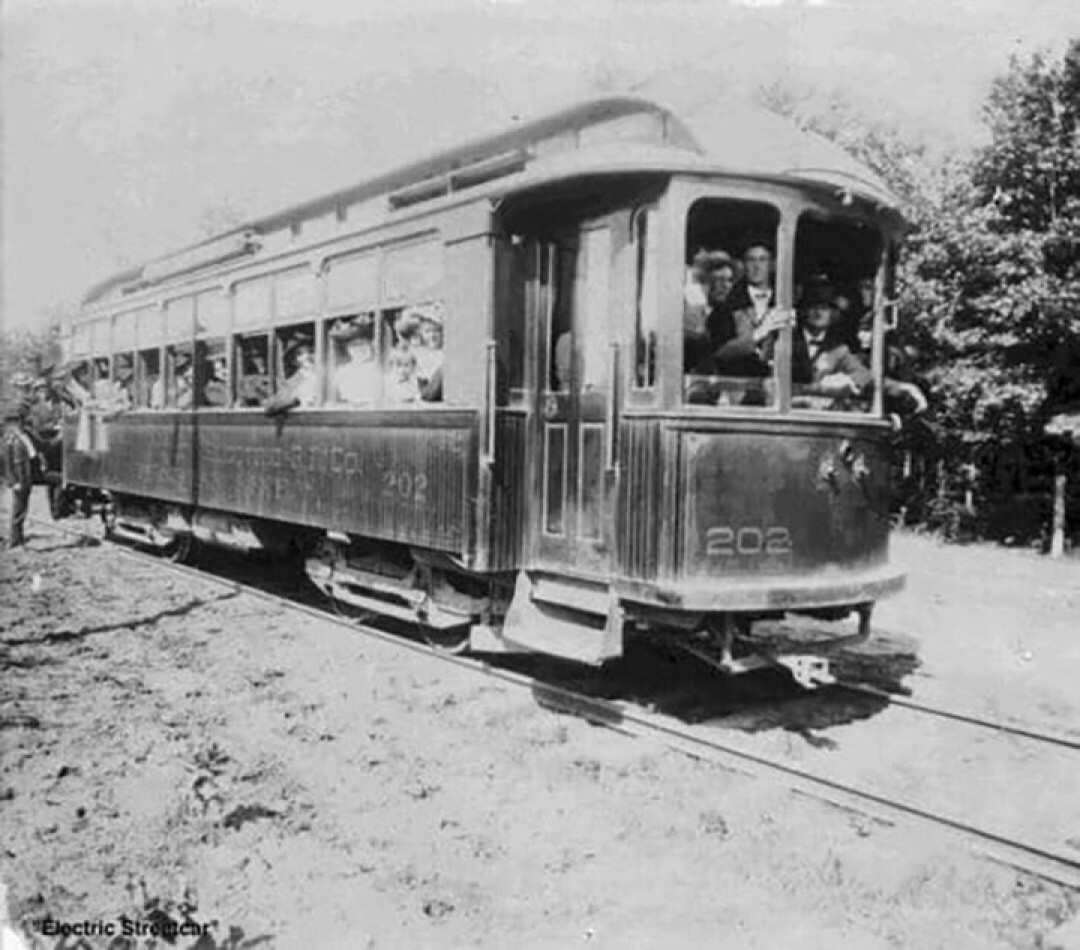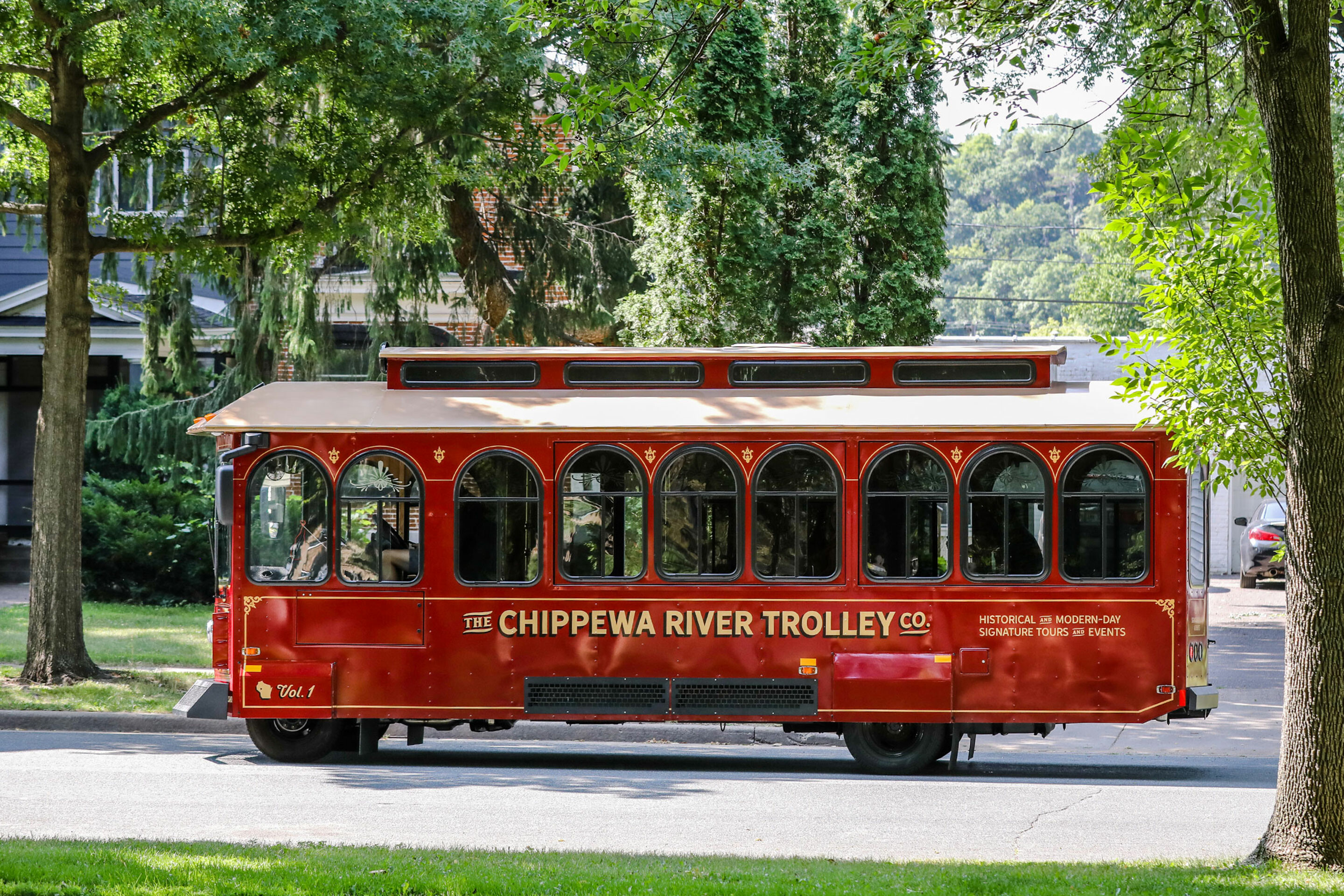Given the success of Eau Claire’s electric city trolleys, in 1897, A.E. Appleyard — who arrived in Eau Claire following electric rail line successes in Boston and Columbus, Ohio — began work on “the interurban,” an 11-mile trolley line connecting Eau Claire to Chippewa Falls. Beginning at the corner of Barstow & Grand, the interurban traveled east on Madison Street, then Omaha Street, before following the railroad north to its terminus in Chippewa Falls. By 1910, Lake Hallie’s Electric Park was the most popular stop along the route, a picnickers’ paradise with a dance hall, band shell, amusement rides, paddle boats, and outdoor movies. On summer afternoons, Eau Claire residents gladly paid their dime to take a leisurely ride to Electric Park.
One such rider was Lois Austin, who, one June morning in the early 1920s, boarded the interurban alongside her elementary school classmates for an end-of-the-year celebration. Each student brought a sack lunch (which, for Lois, included a leftover piece of angel food cake from her birthday), and off they went, speeding down the track en route to Electric Park.
Not even the drizzling rain could dampen their fun. Upon their arrival, the children chased one another around the dance pavilion, stopping only to sample their principal’s homemade lemonade. (“The formula was one to one,” Lois remembered. “One lemon to one pail of water.”)
“Ordinary friends seemed to acquire a romantic aura they had never had before as we sat together on woven reed seats and watched the wonders go by … our lives were measured by the streetcar’s rhythms.”
resident Lois Austin
remembering her youth in Eau Claire hopping the trolley with friends year-round to local parks, ice rinks, and movie theaters
On that June day, the romance of the trolley proved overpowering, even for its young passengers.
“Ordinary friends seemed to acquire a romantic aura they had never had before,” Lois recalled, “as we sat together on woven reed seats and watched the wonders go by.”
While the interurban made for an enjoyable weekend excursion, daily travel occurred on the trolleys. During the winter months, Lois would peer out the window of her family’s Putnam Street home in search of the trolley’s headlight cutting through the blinding snow. She’d race out to meet it, slinging her skates over her shoulders, and hopping aboard for a ride to Half Moon Lake’s ice-skating rink. In the summer months, the destination was different: she and her dates most often paid their nickel fare for a ride to the movies.
Where they went was determined by where the trolley went.
“Our lives,” Lois reflected, “were measured by the streetcar’s rhythms.”
